Where are glands in neck. Understanding Swollen Lymph Nodes in the Neck: Causes, Symptoms, and Treatment
Where are lymph nodes located in the neck. What causes lymph nodes to swell. How long do swollen lymph nodes typically last. When should you seek medical attention for swollen lymph nodes. What are effective home remedies for swollen lymph nodes.
The Anatomy of Lymph Nodes: Location and Function
Lymph nodes, often referred to as glands, are small, bean-shaped structures that play a crucial role in our immune system. They are strategically positioned throughout the body, with notable concentrations in the neck, armpits, and groin. In the neck specifically, lymph nodes can be found under the jaw and along the sides of the neck.
These nodes act as filters, trapping harmful substances like bacteria, viruses, and other pathogens. They also house immune cells that help fight off infections. When an infection occurs, lymph nodes can swell as they work overtime to combat the invading organisms.
Key Locations of Lymph Nodes in the Neck
- Submandibular: Located under the jaw
- Cervical: Found along the sides of the neck
- Submental: Positioned under the chin
Common Causes of Swollen Lymph Nodes
Swollen lymph nodes, also known as lymphadenopathy, can occur for various reasons. While they often indicate that your body is fighting an infection, there can be other underlying causes as well.

Infections
The most common cause of swollen lymph nodes is infection. This can include:
- Viral infections (e.g., common cold, flu, mononucleosis)
- Bacterial infections (e.g., strep throat, tooth infections)
- Fungal infections
Other Potential Causes
While less common, swollen lymph nodes can also be attributed to:
- Immune system disorders (e.g., lupus, rheumatoid arthritis)
- Certain medications
- Cancers, such as lymphoma or leukemia (rare)
Recognizing Symptoms of Swollen Lymph Nodes
Swollen lymph nodes can present with various symptoms. Understanding these signs can help you determine when to seek medical attention.
Characteristic Symptoms
- Tender, painful lumps on the sides of the neck, under the jaw, or chin
- Swelling ranging from pea-sized to grape-sized
- Possible redness or warmth in the affected area
- Potential discomfort when moving the head or neck
Are swollen lymph nodes always painful? Not necessarily. While they are often tender to the touch, some swollen nodes may be painless, especially if the swelling develops gradually.
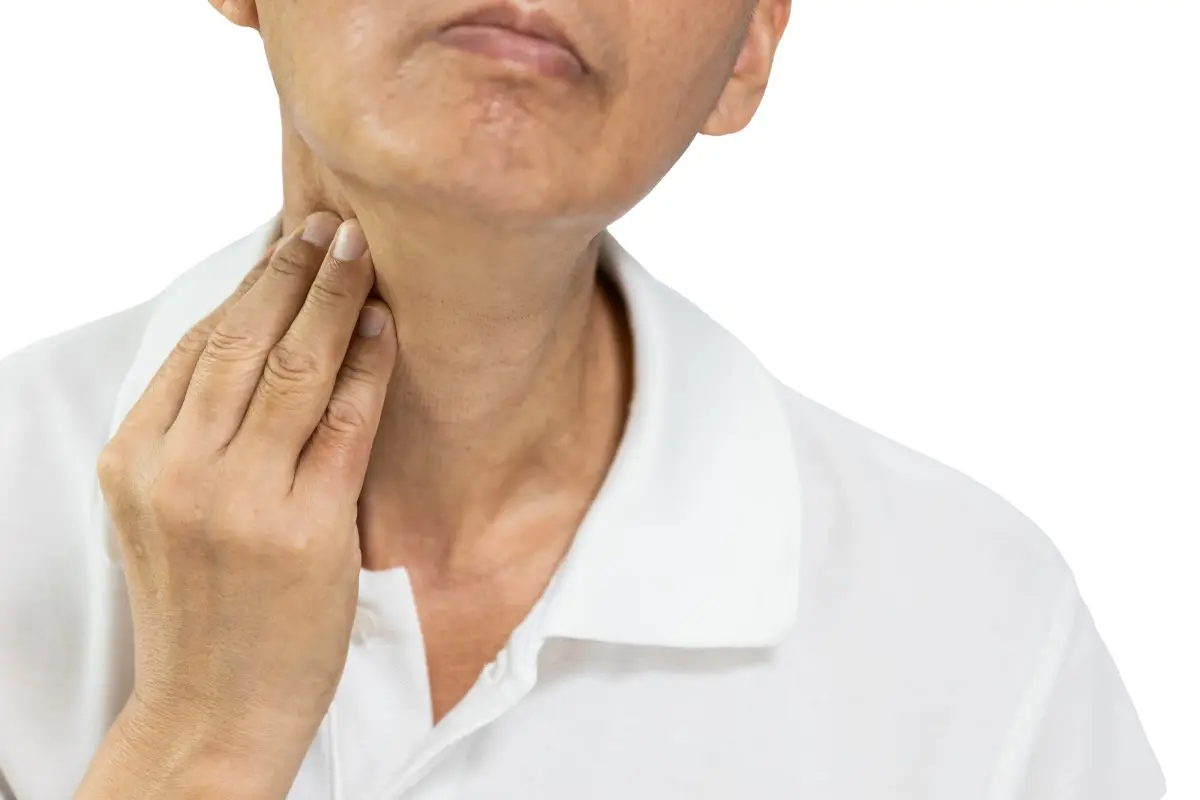
Diagnosing the Cause of Swollen Lymph Nodes
When you visit a healthcare provider for swollen lymph nodes, they will likely perform a thorough examination and may order additional tests to determine the underlying cause.
Diagnostic Approaches
- Physical examination
- Medical history review
- Blood tests
- Imaging studies (e.g., ultrasound, CT scan)
- Biopsy (in rare cases)
How do doctors differentiate between benign and malignant lymph node swelling? While a physical exam can provide initial insights, imaging studies and biopsies are often necessary for a definitive diagnosis in cases where malignancy is suspected.
Treatment Options for Swollen Lymph Nodes
The treatment for swollen lymph nodes depends on the underlying cause. In many cases, especially when the swelling is due to a viral infection, specific treatment may not be necessary, and the nodes will return to normal size on their own.
Home Remedies
For mild cases, several home remedies can help alleviate discomfort:
- Warm compresses: Apply for 20 minutes, 3 times a day
- Over-the-counter pain relievers: Acetaminophen or ibuprofen can help manage pain and fever
- Rest: Allowing your body to recover naturally
Medical Treatments
In some cases, medical intervention may be necessary:
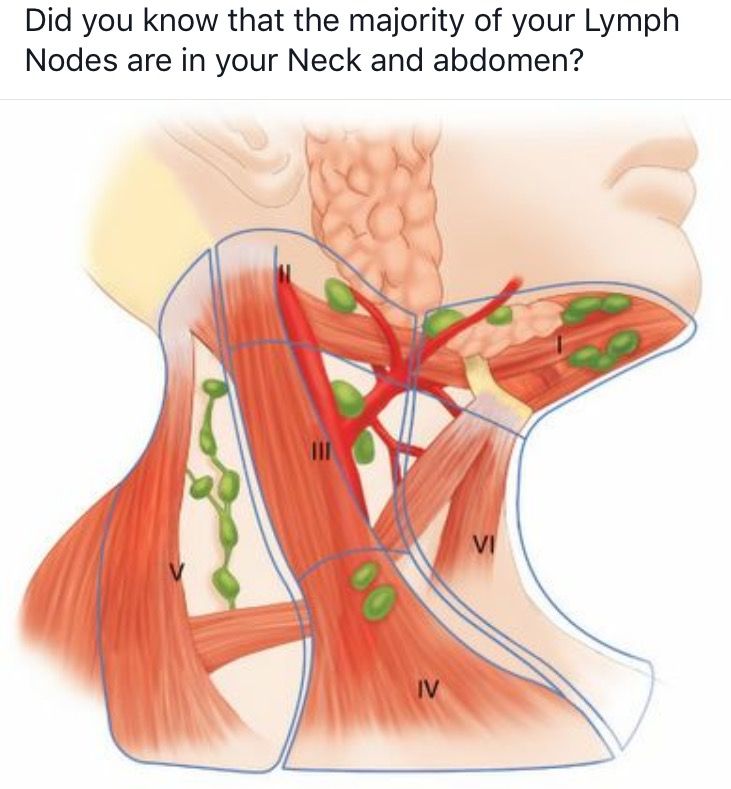
- Antibiotics: Prescribed for bacterial infections
- Antiviral medications: Used for certain viral infections
- Drainage: In cases of abscess formation
- Treatment of underlying conditions: For swelling caused by immune disorders or other medical conditions
Can antibiotics always cure swollen lymph nodes? No, antibiotics are only effective against bacterial infections. They won’t help with viral infections or other non-infectious causes of lymph node swelling.
When to Seek Medical Attention
While swollen lymph nodes often resolve on their own, there are situations where medical evaluation is necessary. Understanding these red flags can help you make informed decisions about seeking care.
Warning Signs
Contact your healthcare provider if you experience any of the following:
- Lymph nodes that continue to enlarge or have been swollen for more than two weeks
- Extremely painful or hard lymph nodes
- Lymph nodes that feel fixed or immovable
- Unexplained fever, night sweats, or weight loss
- Difficulty breathing or swallowing
- Redness or warmth of the skin over the lymph nodes
Is it normal for lymph nodes to remain slightly enlarged after an infection? Yes, it’s not uncommon for lymph nodes to remain slightly enlarged for a few weeks after the infection has cleared. However, if they continue to grow or remain significantly swollen, it’s best to consult a healthcare professional.
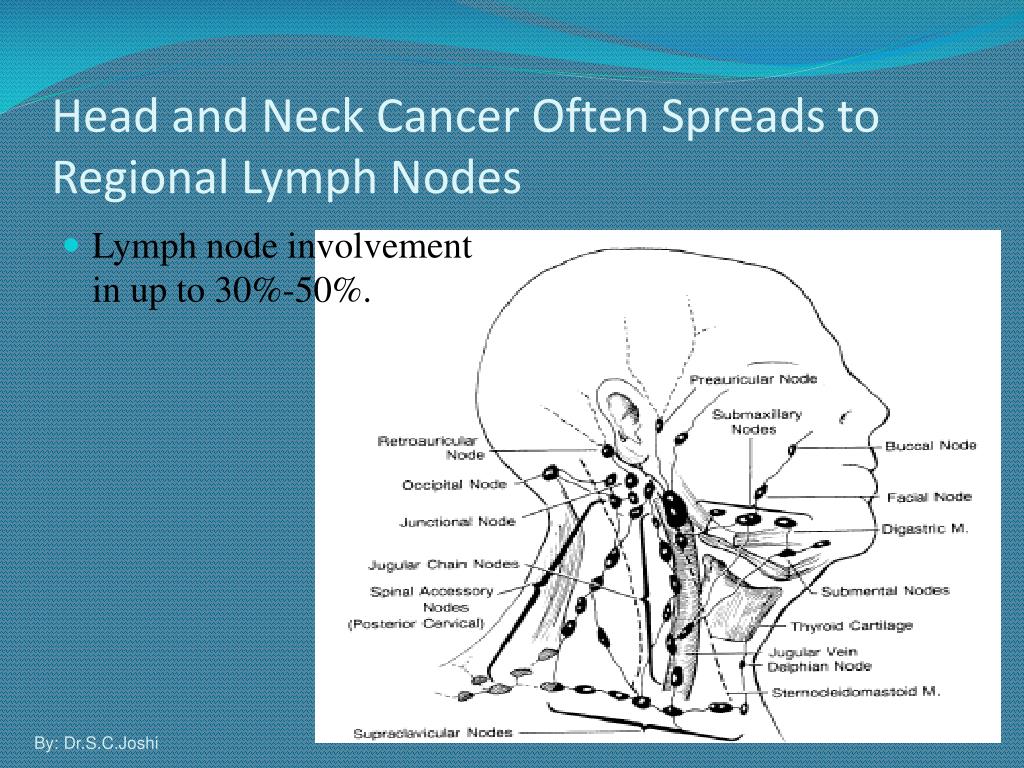
Prevention and Long-term Management
While it’s not always possible to prevent swollen lymph nodes, there are steps you can take to reduce your risk of infections that may lead to lymph node swelling.
Preventive Measures
- Practice good hygiene: Regular handwashing can help prevent the spread of infections
- Maintain a healthy lifestyle: A balanced diet, regular exercise, and adequate sleep can boost your immune system
- Stay up-to-date on vaccinations: This can protect against various infections that may cause lymph node swelling
- Avoid close contact with individuals who have contagious illnesses
Long-term Management
For individuals prone to recurrent lymph node swelling or those with chronic conditions affecting the lymphatic system, long-term management strategies may include:
- Regular check-ups with a healthcare provider
- Monitoring for any changes in lymph node size or texture
- Managing underlying conditions that may contribute to lymph node swelling
- Learning to perform self-examinations to detect any abnormalities early
How often should you perform self-examinations of your lymph nodes? While there’s no strict rule, incorporating a quick lymph node check into your monthly self-exam routine can help you become familiar with your body’s normal state and detect any changes early.
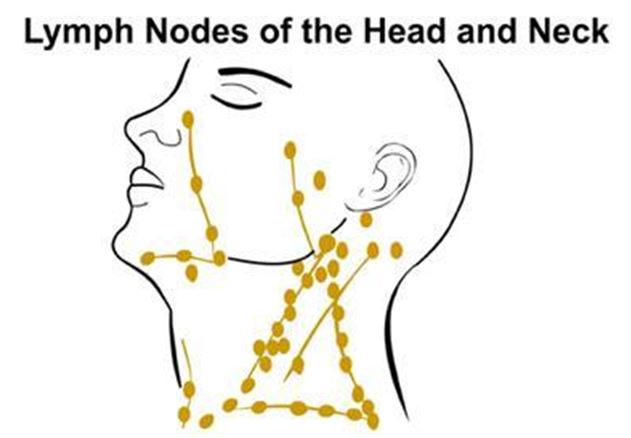
Myths and Misconceptions About Swollen Lymph Nodes
There are several common misconceptions about swollen lymph nodes that can lead to unnecessary worry or inappropriate treatment. Let’s address some of these myths to provide a clearer understanding.
Common Myths
- Myth: All swollen lymph nodes are a sign of cancer.
Reality: While swollen lymph nodes can be a symptom of cancer, they are much more commonly caused by infections or other benign conditions. - Myth: Swollen lymph nodes always require antibiotics.
Reality: Antibiotics are only effective for bacterial infections. Many cases of swollen lymph nodes are caused by viral infections, which do not respond to antibiotics. - Myth: Massaging swollen lymph nodes will make them go down faster.
Reality: While gentle massage may provide some relief, it won’t significantly speed up the healing process and could potentially spread infection if done too vigorously. - Myth: Once a lymph node has been swollen, it will always be enlarged.
Reality: In most cases, lymph nodes return to their normal size once the underlying cause has been addressed. However, some nodes may remain slightly larger than before.
Why do these myths persist? Many of these misconceptions stem from a lack of understanding about the lymphatic system and its role in the body. Education and open communication with healthcare providers can help dispel these myths and promote better understanding of lymph node health.

Future Developments in Lymph Node Diagnostics and Treatment
As medical science advances, new techniques and technologies are being developed to improve the diagnosis and treatment of lymph node disorders. These innovations promise to enhance our ability to detect and manage various conditions affecting the lymphatic system.
Emerging Diagnostic Tools
- Advanced imaging techniques: High-resolution ultrasound and molecular imaging methods for more accurate detection of abnormalities
- Liquid biopsies: Non-invasive blood tests that can detect cancer cells or DNA in the bloodstream, potentially reducing the need for surgical biopsies
- Artificial intelligence: Machine learning algorithms to assist in interpreting imaging studies and predicting outcomes
Innovative Treatment Approaches
- Targeted therapies: Medications designed to attack specific types of cancer cells while sparing healthy tissue
- Immunotherapy: Treatments that harness the body’s immune system to fight cancer and other diseases
- Lymphatic system mapping: Improved techniques for visualizing the lymphatic system to guide treatment decisions
How might these advancements change the way we approach lymph node disorders in the future? These developments could lead to earlier detection of serious conditions, more personalized treatment plans, and potentially less invasive diagnostic procedures. As research continues, we may see a shift towards more precise and effective management of lymphatic system disorders.

Understanding swollen lymph nodes, their causes, and appropriate treatment options is crucial for maintaining overall health. While often a sign that your body is fighting off an infection, persistent or concerning symptoms should always be evaluated by a healthcare professional. By staying informed and attentive to your body’s signals, you can ensure timely and appropriate care for any lymph node-related issues that may arise.
Lymph Node Swelling in the Neck, No Antibiotic Treatment
You have a swollen, or enlarged, lymph node (gland) in your neck. The lymph nodes are part of the immune system. They’re found under the jaw and along the side of the neck, in the armpits, and in the groin. Infection or inflammation are the main causes of swollen lymph nodes in that area. In some cases, cancer is the cause. The lymph nodes may also be a little sore.
Antibiotics aren’t used for swollen lymph nodes unless the nodes are infected by germs (bacteria). A viral infection with swollen glands isn’t treated with antibiotics. Instead you can use warm compresses and pain medicine to treat the swollen glands. The pain will get better over the next 7 to 10 days. The swelling may take 1 to 2 weeks or more to go away.
If a bacterial infection occurs inside the lymph node, it becomes very painful. The nearby skin gets red and warm. You may also have a fever. If this happens, call your healthcare provider. You may need to take antibiotics. You may also need to have the lymph node drained.
You may also need to have the lymph node drained.
Home care
Follow these guidelines when caring for yourself at home:
-
Make a warm compress by running warm water over a washcloth. Put the compress on the sore area until the compress cools off. Repeat this for 20 minutes. Use the compress 3 times a day for the first 3 days, or until the pain and redness start to get better. The heat will make more blood flow to the area and speed the healing process.
-
You may use acetaminophen or ibuprofen to control pain and fever, unless another medicine was prescribed for this. Don’t use ibuprofen in children under 6 months of age. If you have chronic liver or kidney disease, talk with your healthcare provider before using these medicines. Also talk with your provider if you’ve had a stomach ulcer or digestive tract bleeding. Don’t give aspirin to anyone under 18 years of age who is ill with a fever.
 It may cause severe liver damage.
It may cause severe liver damage.
Follow-up care
Follow up with your healthcare provider, or as advised.
When to get medical care
Call your healthcare provider right away if any of these occur:
-
Redness over the lymph node
-
Swelling or pain in the lymph node gets worse
-
Lymph node is getting soft in the middle
-
Pus or fluid drains from the lymph node
-
You have trouble breathing or swallowing
-
Fever of 100.4°F (38°C) or higher, or as advised by your provider
-
Chills
-
You have questions or concerns
© 2000-2022 The StayWell Company, LLC. All rights reserved. This information is not intended as a substitute for professional medical care. Always follow your healthcare professional’s instructions.
All rights reserved. This information is not intended as a substitute for professional medical care. Always follow your healthcare professional’s instructions.
Was this helpful?
Yes
No
Tell us more.
Check all that apply.
Wrong topic—not what I was looking for.
It was hard to understand.
It didn’t answer any of my questions.
I still don’t know what to do next.
Other.
NEXT ▶
Last question: How confident are you filling out medical forms by yourself?
Not at all
A little
Somewhat
Quite a bit
Extremely
Thank You!
Swollen glands – HSE.
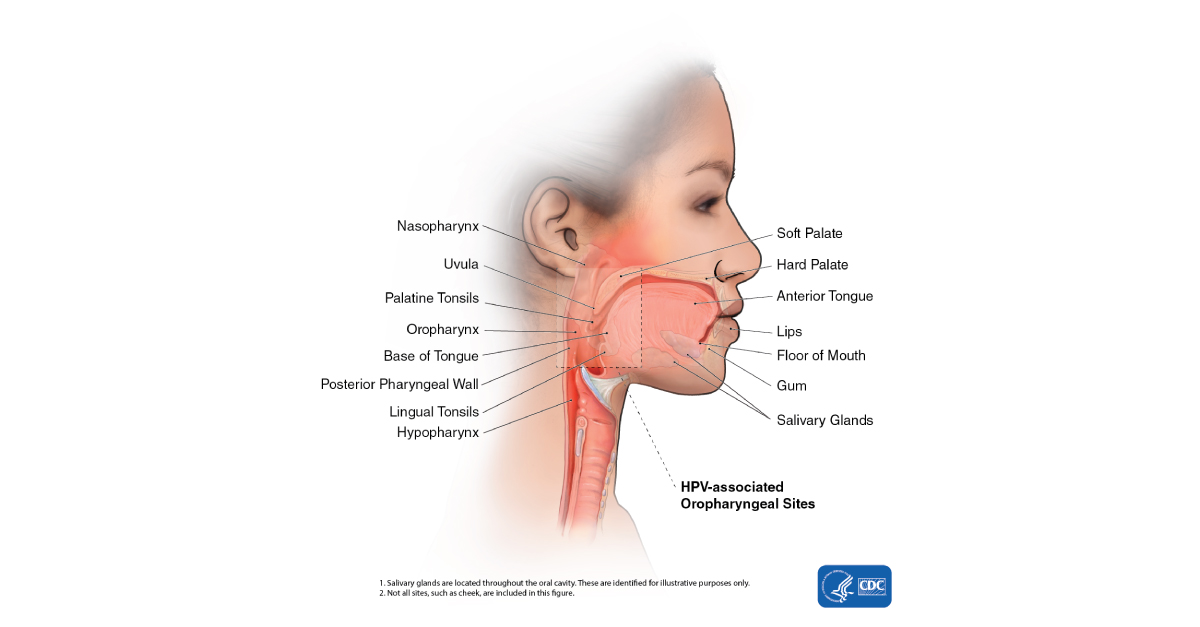 ie
ie
Swollen glands are a sign your body is fighting an infection. They usually get better by themselves within 2 weeks.
Symptoms of swollen glands
Swollen glands feel like tender, painful lumps:
- on each side of the neck
- under the chin
- in the armpits
- around the groin
Glands (known as lymph glands or lymph nodes) swell near an infection to help your body fight it.
Sometimes a gland on only 1 side of the body swells.
You might also have other symptoms, such as a:
- sore throat
- cough
- high temperature
Causes of swollen glands
The cause of swollen glands is often common illnesses, for example:
- colds
- tonsillitis
- ear infections
- throat infections
Sometimes viral infections can cause swollen glands, such as glandular fever.
The cause of swollen glands is rarely more serious conditions such as cancer of the blood system (leukaemia) or lymph system (lymphoma).
Treating swollen glands
Swollen glands should go down within 2 weeks.
You can help to ease the symptoms by:
- resting
- drinking plenty of fluids (to avoid dehydration)
- taking painkillers like paracetamol or ibuprofen
Important
Do not give aspirin to children under 16
Do not self-diagnose, contact your GP if you’re worried.
When to contact your GP
Non-urgent advice: Talk to your GP if:
- you have swollen glands and you find it very difficult to swallow
- your swollen glands are getting bigger or they have not gone down within 2 weeks
- your glands feel hard or do not move when you press them
- you’re having night sweats or have a very high temperature of 38 degrees Celsius or above for more than 3 or 4 days
- you have swollen glands and no other signs of illness or infection
- you have swollen lymph glands just above or below your collar bone (the bone that runs from your breastbone to each of your shoulders)
Your GP will recommend treatment depending on the cause of your swollen glands. This may include antibiotics.
This may include antibiotics.
Antibiotics do not work if the cause of your swollen glands is a viral infection.
Content supplied by the NHS and adapted for Ireland by the HSE
This project has received funding from the Government of Ireland’s Sláintecare Integration Fund 2019 under Grant Agreement Number 123.
Page last reviewed: 25 March 2021
Next review due: 25 March 2024
harmless to very dangerous
Difficult to swallow, scratchy in throat, swollen lymph nodes, suspicious bumps appear: any changes in the neck frighten and make you worry. Some of them are actually harmless, but there are those that just scream about serious problems in the body.
Tags:
Oncological diseases
Health problems
thyroid
The basis of the neck is the cervical vertebrae, in addition, it contains the thyroid gland, which performs the most important functions in the body, large blood vessels pass through, there are lymph nodes, it also contains the esophagus and trachea.
Contents of the article
Do not self-medicate! In our articles, we collect the latest scientific data and the opinions of authoritative health experts. But remember: only a doctor can diagnose and prescribe treatment.
In general, it is here that many important organs and parts of organs are concentrated, and therefore, one must be especially attentive to changes affecting this part of the body. Changes in the neck can be very different – these can be small or rather large bumps that can be felt from the outside, discomfort when swallowing, coughing and sore throat. We found out which symptoms are usually not associated with serious problems, and which should alert and become a reason to see a doctor.
Lump on the neck
One of the important organs located in the neck is the thyroid gland. It is not possible to see it from the outside, but it is quite possible to notice that it has increased in size.
An enlarged thyroid gland looks like a lump on the neck, which may be centrally located in the lower part of the neck or slightly to the side. Often this tumor moves when swallowing.
Often this tumor moves when swallowing.
If a bump appears on the neck, the reasons can be very different: most often it is a benign formation, which, however, can interfere with swallowing, speaking and breathing. The appearance of a bump on the neck is definitely a reason to see a doctor.
Enlarged lymph nodes in the neck
Enlarged lymph nodes in the neck are a common symptom that accompanies many colds. Indeed, even in childhood, mother or grandmother felt the lymph nodes in the neck when we complained of a sore throat and other unpleasant symptoms.
ADVERTISING – CONTINUED BELOW
But swollen lymph nodes in the neck are not always so harmless. The reason may be much more serious, for example, related to oncology. Too large lymph nodes can appear in some forms of neck cancer, as well as in oral cavity and oropharyngeal cancer, which can develop due to the human papillomavirus.
If earlier such forms of cancer were quite rare, then in the last decade, doctors have noted a rapid increase – the frequency of diagnosing such forms of cancer has increased by more than 200 percent.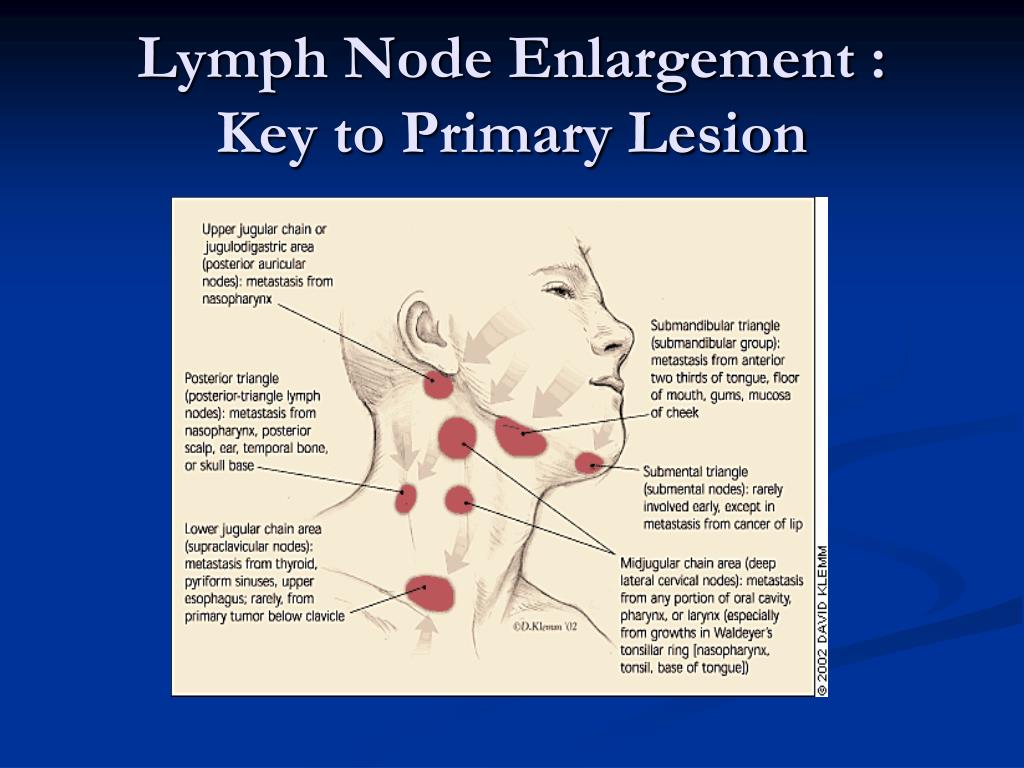 In general, if the lymph nodes are enlarged, and you do not observe any cold symptoms, go to the doctor and be examined.
In general, if the lymph nodes are enlarged, and you do not observe any cold symptoms, go to the doctor and be examined.
Your whole neck is swollen
Does your neck seem to be swollen all over and almost doubled in size? This sometimes really happens, and it is especially disturbing to see this in the morning, when nothing caused concern in the evening.
General swelling of the neck may occur due to dental problems. An untreated tooth is a source of infection in the body, bacteria can easily enter the bloodstream, which will cause a strong increase in lymph nodes, due to which the entire neck will look swollen. A visit to the dentist, who will heal the tooth and cope with the infection, most often helps to solve the problem.
Lump in the throat
The causes of the feeling of “lump in the throat” can be different. This may be due to infectious colds, thyroid disorders, and oncological diseases.
But a lump in the throat is not always a sign of these diseases.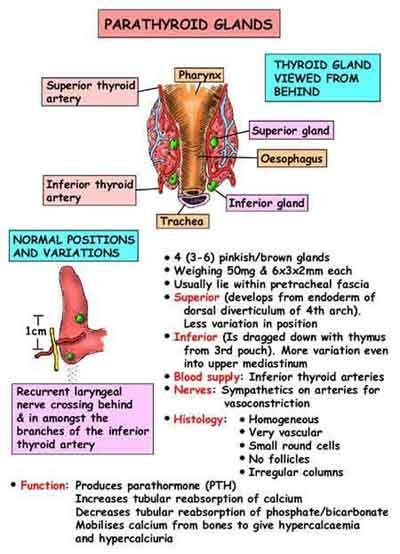 Often this is a subjective sensation that interferes with normal swallowing, eating, breathing and speaking, despite the fact that there is no real barrier or seal in the neck.
Often this is a subjective sensation that interferes with normal swallowing, eating, breathing and speaking, despite the fact that there is no real barrier or seal in the neck.
A feeling of a lump in the throat often occurs in anxious people who are easily excitable, subject to stress and emotional upheavals. Have you noticed such a tendency? Contact a neurologist and a psychotherapist, such features can lead not only to someone in the throat, but also to other health problems – insomnia, depression, panic attacks. You definitely don’t need it and will complicate your life.
Sore throat
Sore throat is a typical cold syndrome. We sneeze, cough, itchy in the throat, everything seems to be fine, especially if this condition is accompanied by enlarged lymph nodes, runny nose, fever. In this case, making a diagnosis will not be a problem.
But what to do if there are no signs of colds, and itching in the throat? There can be several reasons:
- an allergic reaction to food or environmental factors, such as dust or smell;
- severe stress on the vocal cords, which can occur if you have to talk a lot and for a long time;
- problems with the digestive system: sounds strange and unusual, but it’s real.
 Tickle can be due to gastritis, peptic ulcers and other problems that cause an increase in acidity.
Tickle can be due to gastritis, peptic ulcers and other problems that cause an increase in acidity. - disorders of the thyroid gland: perspiration may be associated with the formation of a node that really interferes with swallowing. In addition, such a condition will be accompanied by severe weakness, sleep disturbances and loss of appetite.
When treating itching, you will first need to establish the cause that causes this symptom. In some cases, it can be eliminated quite simply, in others, a thorough diagnosis and no less serious treatment will be required.
Photo: Shutterstock
Subcutaneous growths and what to do about them
Sometimes, to suspect something is wrong, it is enough to touch yourself with your hands.
Lymph nodes
The most “interesting” is found on the neck, but not only. Lymph nodes can be felt under the jaw, on the back of the head, above and below the collarbones, under the armpits, in the groin, and even under the knee.
Lymph nodes, especially in incomplete people, can be palpated normally. Usually they are elongated, up to a centimeter long, half a centimeter wide. Groin more. A healthy lymph node is elastic, slightly “rubber”, mobile, painless, not “sticky” with other lymph nodes, skin and other tissues.
What should be feared? Unusually large lymph nodes, when there are too many of them, when it hurts to touch them, when they are dense, as if “wooden or stone”, when you cannot move them with your fingers under the skin, because they are “stuck” somewhere.
If such a suspicious lymph node is found, the doctor will make sure that the node is really “abnormal”, and then he should not “wait for the weather by the sea.” The art of waiting is good in many life situations, but not when a pathological lymph node is found.
A biopsy is needed here and the doctor will determine its type. In many cases, it is enough to prick the lymph node with a needle and send the contents for liquid cytological examination. By the way, the classic cytological study is still widespread. We at Dawn try to avoid it. With standard “cytology”, the contents of the needle are poured onto a small glass and sent to the laboratory. Most medical organizations do this to this day. Then the laboratory assistant paints the glass, and the doctor looks under a microscope. The chances of determining what the problem is with this approach are from 30 to 60%. It was good at the time. Our time has come when a modernized method of liquid cytology is used, which uses not only the doctor’s eyes, but also artificial intelligence, which finds and marks unusual cells, which the doctor then examines with precision. Accuracy is impressive and exceeds, in most cases, 95%. That’s the only way we do cytology at Rassvet.
By the way, the classic cytological study is still widespread. We at Dawn try to avoid it. With standard “cytology”, the contents of the needle are poured onto a small glass and sent to the laboratory. Most medical organizations do this to this day. Then the laboratory assistant paints the glass, and the doctor looks under a microscope. The chances of determining what the problem is with this approach are from 30 to 60%. It was good at the time. Our time has come when a modernized method of liquid cytology is used, which uses not only the doctor’s eyes, but also artificial intelligence, which finds and marks unusual cells, which the doctor then examines with precision. Accuracy is impressive and exceeds, in most cases, 95%. That’s the only way we do cytology at Rassvet.
“No,” an experienced reader will exclaim with surprise, “liquid cytology is a gynecological method, for the cervix!” Yes, it’s true, it all started with the cervix, but has long gone beyond it. Now liquid cytology is suitable for diagnosing any formations – from an enlarged salivary gland to a thyroid nodule. This allows you not to miss dangerous diseases and not to do unnecessary operations.
This allows you not to miss dangerous diseases and not to do unnecessary operations.
Sometimes a surgeon, according to indications known to him, which cannot be described in a couple of minutes, removes the entire lymph node and sends it for histological examination. If this did not help to make an accurate diagnosis, in the tissue of the lymph node they look for features characteristic of different tumors, using an immunochemical or genetic method, the diagnosis is made at the molecular level.
This way you can distinguish metastasis from lymphoma, a healthy lymph node from inflammatory lymphadenopathy or sarcoidosis. On account of a timely biopsy in the world, tens of millions of saved lives are saved. No need to be afraid of a person with a needle or even a scalpel.
Lipomas, cysts, atheromas
Lipoma – wen – a benign tumor of fatty subcutaneous tissue. Usually causes only cosmetic inconvenience, but can become inflamed and hurt if located on a part of the body that is often subjected to compression. There are unusually large, even huge lipomas. It is better to remove them until they have acquired the proud title of “huge”. Although not everyone needs to be removed. Talk to your surgeon about what needs to be done and when.
There are unusually large, even huge lipomas. It is better to remove them until they have acquired the proud title of “huge”. Although not everyone needs to be removed. Talk to your surgeon about what needs to be done and when.
Atheroma is an accumulation of non-structural fatty mass under the skin, it is an overinflated sebaceous gland that has reached amazing sizes. They are usually microscopic. But a neglected atheroma can reach a size of tens of centimeters, have a tortuous course, become inflamed and suppurate, and greatly interfere with life. They must be removed, carefully, without leaving an external “bag” so that this trouble does not return again.
Superficial cysts are more common on the neck, they are usually congenital, but are not noticeable for the time being. Sometimes they begin to grow and become rampant. A surgeon experienced in the head-neck subspecialty can remove it. Do not trust a surgeon without experience in removing such formations.
Hernias
At any age, even in childhood, one can find (usually on the abdomen or in the groin) protrusions that react with the size of a cough, can rumble when pressed, can deflate and inflate again. If they start to get sick, this is a formidable warning that requires immediate medical attention. A hernia is formed in the “weak” place of the abdomen, in the area of operation, in the groin area, where natural “channels” pass, in the umbilical ring. As long as they are not infringed upon, they are relatively harmless. But the risk of infringement should be determined by the surgeon, it is worth discussing tactics with him regarding the hernia.
If they start to get sick, this is a formidable warning that requires immediate medical attention. A hernia is formed in the “weak” place of the abdomen, in the area of operation, in the groin area, where natural “channels” pass, in the umbilical ring. As long as they are not infringed upon, they are relatively harmless. But the risk of infringement should be determined by the surgeon, it is worth discussing tactics with him regarding the hernia.
“Cellulite”
Medicine and the Internet use this term to refer to different phenomena. In medicine, cellulite is a purulent inflammation of the subcutaneous tissue, it cannot last long, it is treated surgically and with antibiotics.
In ordinary life, it is a fibrous induration in the fatty subcutaneous tissue, the danger is only cosmetic. Sometimes the patient feels for a particularly prominent lump, presses on it, it swells and becomes inflamed from such self-harm. There is only one treatment – do not touch it with your hands and everything will pass. If it interferes, you can discuss this phenomenon with a cosmetologist and a plastic surgeon.
If it interferes, you can discuss this phenomenon with a cosmetologist and a plastic surgeon.
Thyroid nodules
The thyroid gland is located on the front of the neck, slightly lower than the Adam’s apple. Many touch it, many are afraid of it, some find knots in themselves. This is surprising – the search for thyroid nodules requires a certain skill, not all doctors have it. Therefore, it is probably not worth doing such a study yourself. The best way to evaluate thyroid nodules is with an ultrasound. It can be done correctly and classify the node using the TIRADS protocol. Not all thyroid nodules, even large ones, need to be punctured. Some can be neglected. Others must be checked by liquid cytology. Yes! Routine cytology for thyroid nodules is outdated and the cost of error is too high. A second prick with a microscopic needle, and there is an accurate diagnosis. This is all the more important because with almost any diagnosis, the prognosis is good – if everything is done correctly and on time.

 It may cause severe liver damage.
It may cause severe liver damage. Tickle can be due to gastritis, peptic ulcers and other problems that cause an increase in acidity.
Tickle can be due to gastritis, peptic ulcers and other problems that cause an increase in acidity.